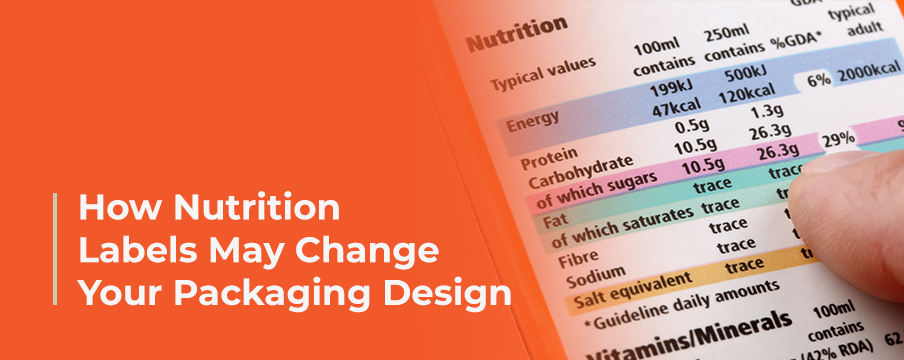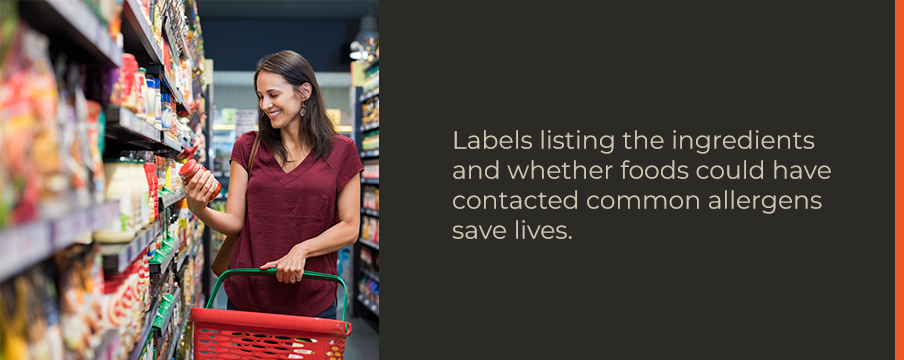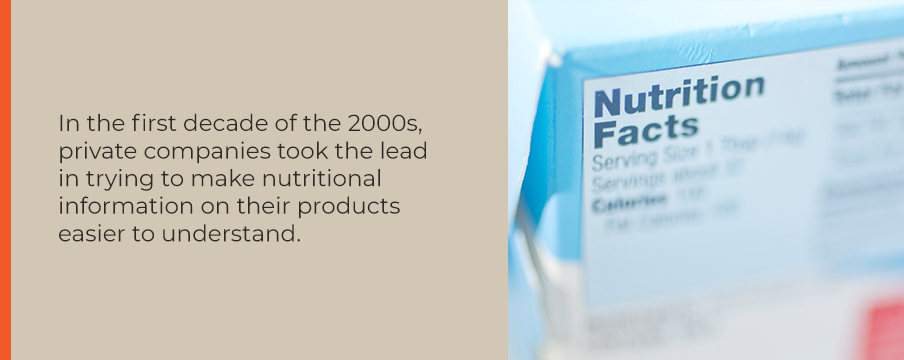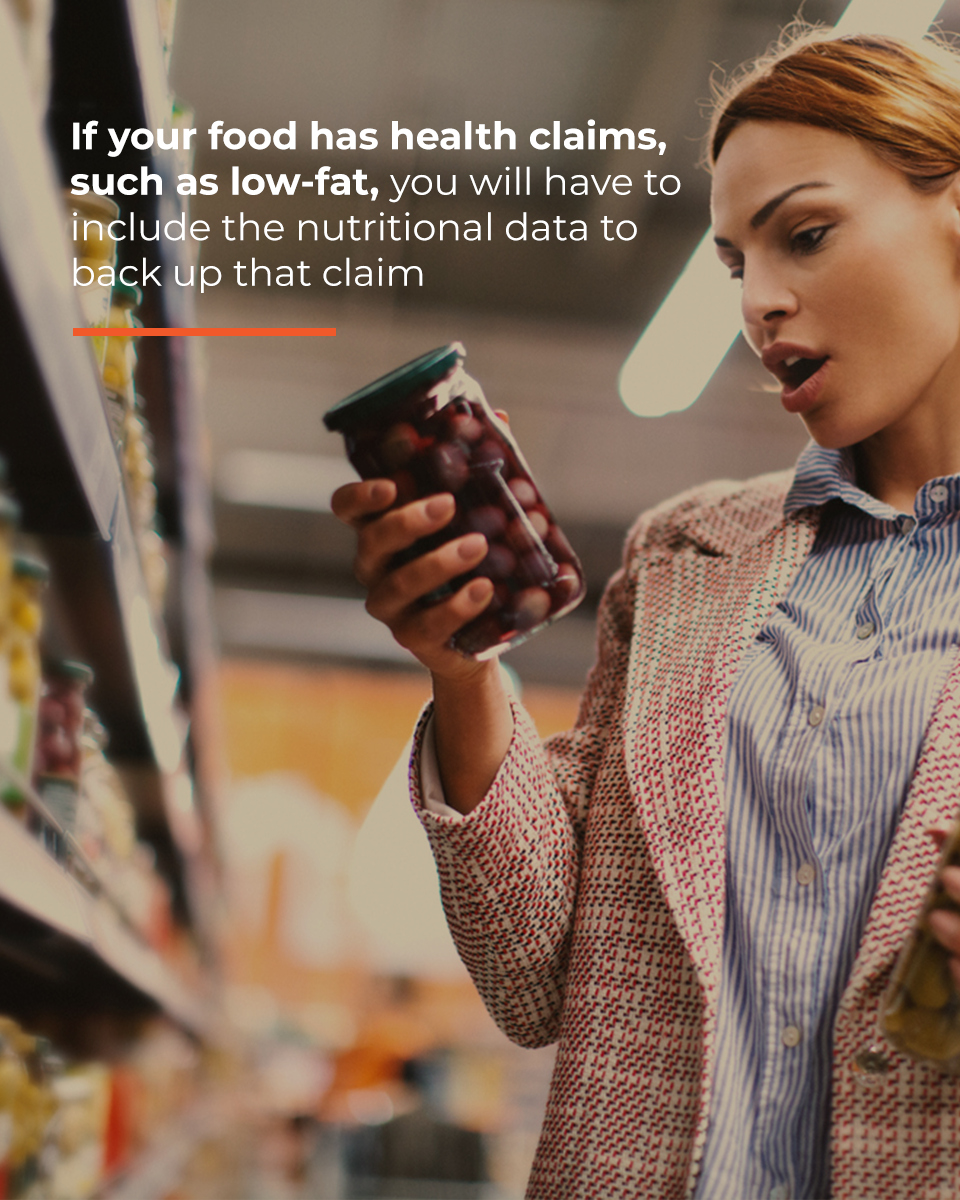How Nutrition Labels May Change Your Packaging Design
By: phase1
The nutritional profile of your product may impact its packaging design. No matter where you are in the development phase of your product, you must consider how the information required on a food label will affect your packaging.
The design of your packaging will make a first impression on your potential customers, and unless you can show them the qualities they want, your product may not end up in their carts. Find out everything you need to know to determine if your product needs a nutrition label and how the information can affect your packaging’s appearance.
Why Nutritional Labeling Is Important
Nutritional labeling provides critical information to consumers that could help them regulate medical conditions, control macronutrient consumption or avoid allergens. In some instances, such data could save lives, especially in the case of allergens. Without labels, people would not know the makeup of their food and whether it lives up to company claims of healthfulness.

1. Food Allergies
People with food allergies must avoid products that contain allergens. In cases of severe allergies, they cannot even consume foods prepared in the same area as those that set off their reactions. For example, those allergic to peanuts may experience anaphylactic shock if they eat food prepared in a kitchen that also handled peanuts or peanut butter.
Labels listing the ingredients and whether foods could have contacted common allergens save lives. This information helps those with food allergies to avoid triggering products.
Today, food products that include major allergens or proteins from them must have that information on the label per the Food Allergen Labeling and Consumer Protection Act (FALCPA) of 2004. The allergens requiring listing under this act include shellfish, peanuts, eggs, wheat, soybeans, tree nuts, fish and milk. These eight allergens account for 90% of food allergies.
2. Creates Reference Values
The listings on food nutrition facts include percentages of the daily recommended value. These numbers give consumers data on whether a food is a good source of a particular nutrient such as fats or fiber. Information of this type helps people stick to diets to regulate medical conditions or to maintain weight.
3. Avoid Unsubstantiated Claims
When you list your ingredients and nutritional values on a product, you provide the data required to back up any claims you make about your product. For instance, if you claim your product is low-sodium, the sodium amount on the label should reflect that. When you can show your customers the information to verify your claims, your product and your brand both become more trustworthy.
Similarly, this information helps to prevent unscrupulous producers from making false claims about their products. Someone who makes a chocolate cake and claims that it is low-calorie needs to have the calorie information on the label to verify that statement. If they don’t, a consumer has no way of substantiating the claim. To prevent such unsubstantiated claims from appearing on labels, the Food and Drug Administration (FDA) began requiring food products to have an ingredients label on the packaging and a nutrition label.
The History of Nutrition Labels
As ubiquitous as they seem, nutritional labels are a relatively modern concept. Though people had been eating packaged foods for decades, the truth on the labels only became mandated in the 20th century.
1. The 1900s to the 1950s
The Pure Food and Drug Act of 1906, for the first time, prohibited selling foods across state lines with adulterated contents. It required the food inside a container to match what the label indicated. In 1913, information on food products’ weights became required. This labeling law ensured that consumers knew that the amount inside the package reflected what they paid for. For example, they could compare the content weights of two different packages to see which one offered a better price per ounce.
As food and drug technology progressed, artificial ingredients became more common in everything from cosmetics to medications to foods. In 1938, to address consumers’ concerns over these ingredients, Congress passed the Food, Drug and Cosmetic Act. Product manufacturers had to list all artificial flavorings, colorings and preservatives on the label.
The two World Wars brought advances in nutritional sciences in the form of increasing knowledge of vitamins and their benefits in preventing severe health conditions. Though the FDA still did not require labels on flour or bread, the group did allow manufacturers in the 1940s to fortify those products with specified levels of vitamins and minerals to enrich them.
2. The 1950s to the 2000s
Starting in 1950, the FDA made more strides in ensuring consumers got healthy foods. In 1950, the Oleomargarine Act required any margarine to bear a label stating the product was oleomargarine. This act prevented some producers from marking up the price of their cheaper margarine by selling it under the name of butter.
By the end of the 1950s, additives got another look. In 1958, manufacturers had to declare all additives in their products. Those who made new additives had to establish the safety of using those ingredients in foods. This year was also when the FDA published its first listing of food additives generally recognized as safe (GRAS).
Through the first half of the 20th century, the FDA sought to ensure the safe composition of foods. The 1969 White House Conference on Food, Nutrition and Health requested that the FDA change its focus to ensuring that Americans had healthier foods. This change in tactic led to the group requiring food and drug companies to provide consumers with as much information about the products as possible.
In 1973, any foods that made health claims or had additives needed to have nutritional labeling. Though few people regarded these labels, the government did. In 1977, it studied the health of the nation’s diet. The Department of Agriculture put out a report outlining its recommended guidelines for American food intake in 1980 and updated them every five years. These guidelines started with just seven points in 1980, but by 2005, they expanded out to 41 recommendations.
In 1990, Congress passed the Nutritional Labeling and Education Act (NLEA), which required the use of nutrition labels on all foods. It also standardized some health claims such as low-fat and low-sodium. This act created the ingredients listing, serving sizes and information on health claims. The nutritional label came in 1994 on all products covered under the NLEA. This label showed a breakdown of nutrients per serving in an easy-to-read format. Unfortunately, consumers did not find this label as easy to understand as expected, and future changes would come during the 2000s to make comprehending the food consumers ate easier.
3. The 2000s and Beyond

In the first decade of the 2000s, private companies took the lead in trying to make nutritional information on their products easier to understand. This trend began to gain traction after the FDA, in 2003, started to let companies make claims based on only some scientific evidence. In 2004, PepsiCo created its SmartSpot label to indicate healthier choices among its product line. Two years later, the grocery chain Hannaford Supermarkets started to use Guiding Stars to help consumers find more nutritious products.
In 2007, Kellogg’s introduced its Nutrition at a Glance, which listed calories and other nutrient amounts on the front of the package. Mars, Inc. mimicked the move in 2009.
The following year, 2010, the FDA required cuts of meat to carry a nutrition label. Previously, as a single item like whole vegetables, meat cuts did not need to include nutritional information on them.
In 2016, the FDA established rules for a new label outlining nutrition. While the overall look would remain the same, several components would stand out more, and others would disappear. The most significant changes for the new labels included the following:
- Larger, bold font for the calories
- Values reflecting realistic serving sizes
- Information on added sugars
- Updated percentages of daily values
- Requiring percentages and amounts of both potassium and vitamin D
Establish If You Need Food Labels
Keep in mind that the FDA does not require all foods to carry nutritional information. Some exemptions apply, though the FDA notes that even if you qualify under one of the exceptions to not include a nutrition label, if you make health claims on your product, you no longer are exempt.

1. Foods That Do Need Labels
The majority of foods for sale require nutritional information and ingredients listings. Only a handful of exceptions exist. If your food has health claims, such as low-fat, you will have to include the nutritional data to back up that claim, even if you otherwise would not have to have a label.
If you have any doubts about whether your product needs a label, opt to include the ingredients listing and nutritional information. Your customers will be happy to have the data available when making decisions about how your product can fit into their diets.
2. Foods That Do Not Require Labels
While most foods do need labels, some don’t. If your product falls into one of the exemptions below and you do not make health claims, you don’t need to include a nutritional information panel on the product. Foods exempt from needing nutritional facts panels include the following types of food:
- Those made by small businesses
- Bakery, deli or restaurant foods sold directly to consumers and eaten immediately
- Foods without nutritional value, such as spices or plain coffee grounds
- Fresh seafood and produce
- Donated food that never goes on sale
- Custom processed game and fish
- Medical foods
Nutritional Labeling and Your Packaging
Nutritional labeling will have more of an effect on your package design than you might think. The actual label on your product falls under the guidance of the FDA. You must follow several rules for label design characteristics to ensure that your packaging adheres to federal requirements. Beyond those, you can make changes as needed to adapt the label to your product’s needs.
1. What’s Required
The FDA requires the type of food and the quantity to appear on the front label, which it calls the principal display panel (PDP).
This PDP will include the statement of identity, which is not your product’s name but what your food is. For example, if you have a tomato soup product called Memories of Tuscany, you must include the words “tomato soup” in bold print on the front of the packaging. The artwork on your PDP cannot hide any required information or mislead the consumer. For example, you cannot have a picture of a salad on your package of cupcakes.
To the right of the PDP on your package, you must have the information panel with nutritional data, your company’s name and address and the ingredients listing. The information paneling data must have a font that measures at least 1/16 inch tall. Each letter must be no taller than three times its width, and you must use a color that contrasts with the background. You cannot include any information not required by the FDA on the information panel. For example, you cannot include a barcode or recipes on the information panel.
You must include a listing of ingredients in your product on the same side where you have your company’s name and address. Typically, this is on the information panel. Always list the ingredients in descending order of their amount in the product and use the common name for them. For example, list sugar instead of sucrose. This information should help the consumer, not confuse them. As with the nutritional information, use a font that measures at least 1/16 inch for the lower case letter o.
2. The Impact of Your Nutritional Label on Design
The nutritional profile of your product may affect how you design the label. If your product has a high amount of nutrients to avoid or if it is excessively high in calories, you may consider reformulating it to make it healthier. The recipe and serving size both have significant impacts on the calorie count of the food. Changing these can improve the nutritional profile of the product.
If you don’t want to make changes to the recipe, you can design your package to emphasize the decadence of your product and make the consumer feel like they’re giving themselves an indulgent treat when buying your product.
Through the use of color, you can make a product appear healthier or more luxurious. For example, green on a product label implies healthfulness or all-natural ingredients, while dark browns remind the consumer of decadent chocolate and indulgence.
Find Out More About Prototypes for Your Product Packaging
The nutritional information for your product could affect your final design. What aspects – if any – of your food’s nutrition do you want to highlight? Is it organic or all-natural? Do you want the color of the product to shine on the label? These decisions will impact your design and prototype.

You have a vision for your product design, and at Phase 1 Prototypes, we bring that vision to life. Send your design ideas to us, and our professionals will create high-quality prototypes that you can use to refine your designs and help you choose the perfect packaging for your product. See the difference we can make by contacting us to get started with a free quote.

Leave a Reply